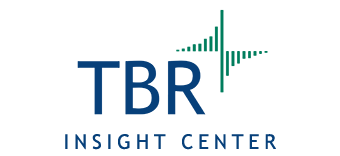Accenture and CHROs connect people and work during COVID-19
In the early days of the nationwide shutdowns, members of the Accenture Chief Human Resource Officers (CHRO) Forum saw the storm brewing, compelling them to think creatively. With swift action and support from CEOs, HR leaders from Accenture, Lincoln Financial Group, ServiceNow and Verizon mobilized their efforts and capabilities and developed a solution that facilitates continued employment. Accenture stood up People + Work Connect, an analytics-enabled platform, with the goal of helping enterprises sustain business continuity by allowing human resources to move to meet demand.
What it is and what it is not
TBR had a chance to discuss the nuances of the People + Work Connect platform with two of the architects behind it, Accenture Talent & Organization/Human Potential Lead Eva Sage-Gavin and Work & Workforce Lead Nicholas Whittall, to understand their motivations for and expectations of the platform.
With Accenture acting as the technology provider, rather than the mediator between organizations’ supply and demand workforce needs, the company’s role is largely centered on assembling and managing the collation and design, and building and running the platform. A team from Accenture Liquid Studio built a business-to-business, fit-for-purpose platform to help companies match available workers to open jobs based on select criteria including location, experience and number of openings. The platform is currently available for free, and Accenture leaders have said the company “won’t ever charge.”
While TBR recognizes the noble approach Accenture and its partners have taken to develop, manage and offer the platform free of charge, in the long run we believe the company is gaining value from the effort (discussed below). With design principles including “progress over perfection,” Accenture developed the platform in 14 days from pilot to launch, reaching its goal of a “Minimally Loveable Product,” rather than an all-encompassing solution. TBR sees Accenture’s approach here as another example of COVID-19 accelerating change across IT environments and, more broadly, business policies and practices.
At the same time, both Sage-Gavin and Whittall reinforced that the platform’s simplicity and scale appealed to businesses looking for immediate solutions to massive problems. We see the simplicity of the data request — Accenture stayed away from using personally identifiable information when developing the platform — as critical to the platform’s uptake and success, such as when two call center companies — one laying off workers and one looking for experienced call center staff — can use the platform to ensure a minimal number of jobs are lost in particular locations. Additionally, features such as a depository for ideas, questions and advice, called a “Knowledge Exchange” on the platform, can provide insights into best practices on benefits and evolving HR practices.
We see such insights impacting not only the HR role but also the broader organization. As COVID-19 abates, revised HR policies and the lessons learned through using the platform to address challenges during the pandemic will likely influence future staffing and IT needs, thus affecting organizations’ planning and financial cycles. As Accenture maintains an arm’s length distance from how companies handle the recruiting and onboarding processes once the match is made, the company is able to provide data concierge services, identifying which data is most important to future refinements of existing ERP systems and HR platforms.
